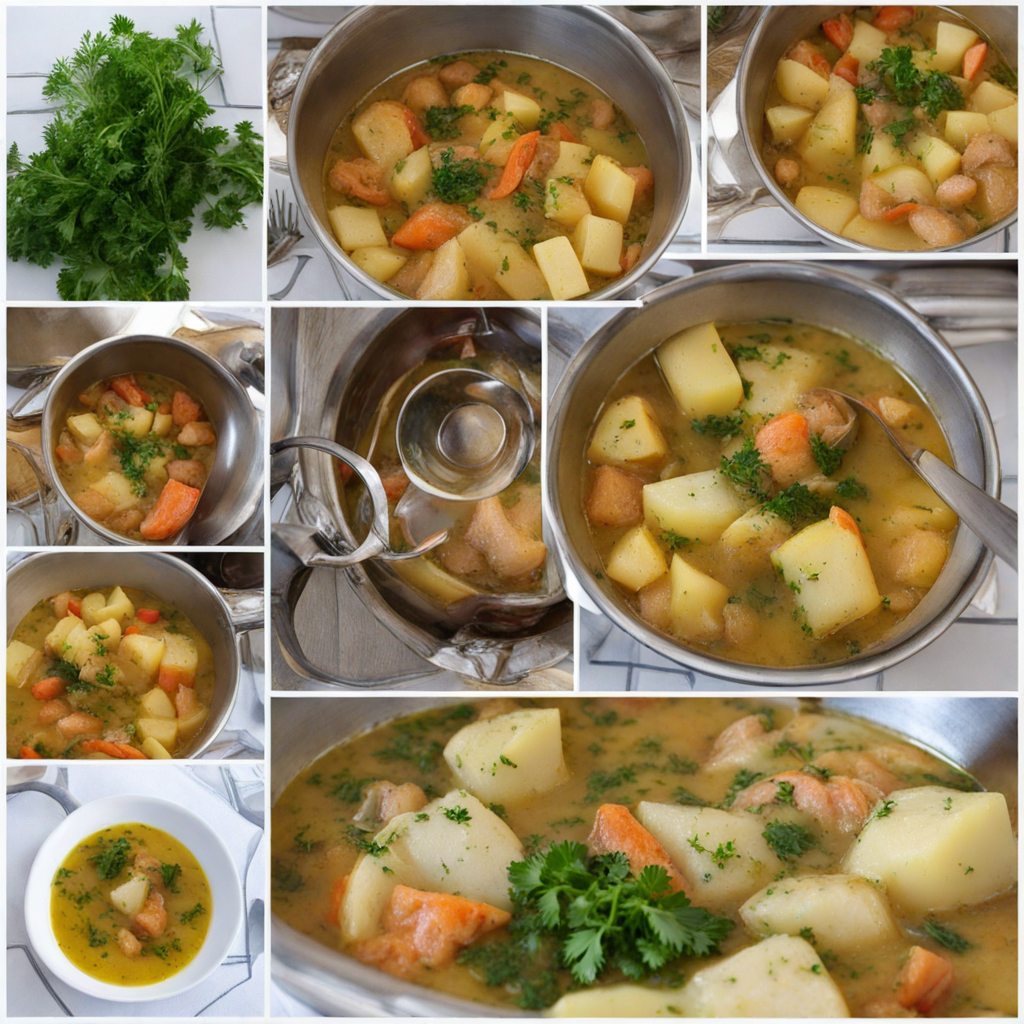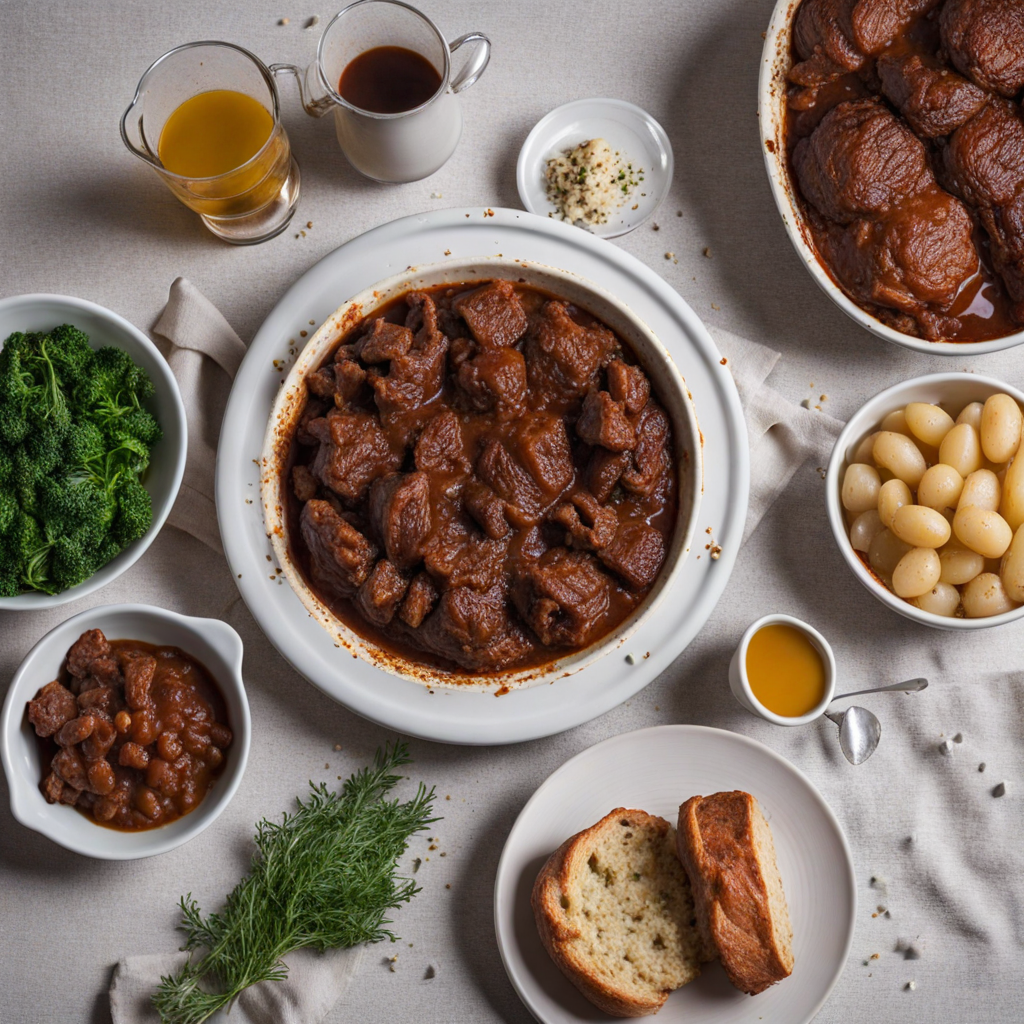Gregada
Gregada is a traditional Croatian fish stew that hails from the picturesque coastal region, particularly around the islands of Hvar and Vis. This dish embodies the essence of Mediterranean cuisine, showcasing the region's abundant seafood. The main ingredients typically include a variety of fresh fish, such as white fish or grouper, alongside shellfish, potatoes, onions, and garlic. The stew is enriched with a generous drizzle of olive oil and seasoned with aromatic herbs like parsley and bay leaves, creating a symphony of flavors that is both comforting and invigorating. As you savor Gregada, you'll experience the delightful interplay of textures and tastes. The fish is tender and flaky, cooked to perfection, while the potatoes absorb the savory broth, offering a hearty bite. The combination of fresh herbs adds a fragrant note, enhancing the natural sweetness of the seafood. This dish is often served with a side of crusty bread, perfect for soaking up the flavorful broth, allowing you to enjoy every last drop of this culinary masterpiece. Gregada is more than just a meal; it represents the culinary traditions of Croatia, where simplicity and quality ingredients take center stage. It is typically enjoyed during gatherings with family and friends, celebrating the bounty of the sea. Each spoonful tells a story of the Adriatic waters and the skilled hands that prepare it, making Gregada a must-try dish for anyone looking to explore the rich flavors of Croatian cuisine.
How It Became This Dish
Gregada: A Culinary Gem of Croatia’s Adriatic Coast Nestled in the heart of the Dalmatian region of Croatia, Gregada is more than just a dish; it’s a narrative woven into the cultural and historical fabric of the Adriatic coast. This traditional fish stew, with its roots steeped in the rustic practices of local fishermen, reflects a rich tapestry of regional flavors, communal identity, and the enduring relationship between the people and the sea. Origins of Gregada The origins of Gregada can be traced back to the fishing communities of Dalmatia, particularly on the islands and coastal towns that dot the Adriatic Sea. The word "gregada" itself is derived from the Italian term "grego," which means "to stew." The dish is believed to have been created by fishermen who, after a long day at sea, would prepare a simple meal using whatever fresh catch they had brought back to shore. This frugality and resourcefulness are hallmarks of the Mediterranean lifestyle, where the bounty of the sea is honored and celebrated. Historically, the fishing communities of Dalmatia relied heavily on seasonal catches—such as white fish, octopus, and shellfish—coupled with locally grown vegetables. Gregada traditionally includes ingredients like potatoes, onions, garlic, olive oil, and white wine, showcasing the region’s agricultural offerings. The inclusion of aromatic herbs such as parsley and bay leaves adds a fragrant depth to the stew, reflecting the Mediterranean climate that nurtures such flavors. Cultural Significance Gregada is not merely a meal; it is a symbol of community and tradition. In Croatian coastal culture, food plays an integral role in social gatherings, family celebrations, and religious festivals. The preparation and consumption of Gregada often involve communal cooking, where families and friends come together to share the experience. The dish is typically enjoyed during special occasions, such as Name Days, Easter, and summer festivals, reinforcing its status as a beloved staple of Dalmatian cuisine. Moreover, Gregada embodies the principles of the Mediterranean diet, which emphasizes fresh, local ingredients and a balanced approach to eating. This dietary philosophy has gained international recognition for its health benefits, promoting longevity and well-being. The dish serves as a reminder of the connection between food, health, and community—a connection that has persisted through generations. Development Over Time As Croatia's culinary landscape evolved, so too did Gregada. The dish has adapted to incorporate various regional influences while still retaining its core identity. In the 20th century, the increasing popularity of tourism in Croatia introduced new culinary trends, with Gregada emerging as a quintessential dish to showcase the rich flavors of Dalmatia. Restaurants began to refine the traditional recipe, adding modern twists while preserving its authenticity. The rise of culinary tourism has also played a significant role in the dish's evolution. Chefs and home cooks alike have sought to elevate Gregada by experimenting with different seafood varieties and incorporating contemporary cooking techniques. For instance, some versions now feature a blend of fish and shellfish, while others may introduce spices or additional vegetables to enhance the dish's complexity. In recent years, the resurgence of interest in traditional and regional cuisines has further solidified Gregada’s place in Croatian culture. Food festivals celebrating local gastronomy often highlight Gregada, attracting both locals and tourists eager to experience authentic Dalmatian flavors. This revival has also fostered a renewed appreciation for the artisanal practices of fishing and agriculture that underpin the dish’s preparation. A Modern Interpretation of Gregada Today, Gregada is celebrated as a symbol of Croatian heritage, with chefs and home cooks alike cherishing the traditional methods of preparation. While the basic components remain, modern interpretations have emerged, often emphasizing sustainability and the use of organic ingredients. Many chefs source their seafood from local fisheries that adhere to sustainable practices, ensuring that the dish not only honors tradition but also supports the health of the marine ecosystem. In terms of presentation, contemporary versions of Gregada may incorporate artistic plating techniques, showcasing the vibrant colors of the ingredients and creating an appealing visual experience. This modern approach reflects a broader trend in the culinary world, where aesthetics play a crucial role in the dining experience. Furthermore, the dish’s versatility allows it to be adapted to various dietary preferences. Vegetarian and vegan adaptations have emerged, using seasonal vegetables and plant-based broths to create a dish that retains the essence of Gregada, allowing it to cater to a wider audience. Conclusion Gregada is a dish steeped in history, culture, and community, embodying the spirit of the Croatian Adriatic coast. From its humble beginnings as a fishermen’s stew to its status as a celebrated symbol of Dalmatian cuisine, Gregada tells a story of resilience, resourcefulness, and the profound connection between food and identity. As culinary trends continue to evolve, Gregada remains a beloved staple that bridges generations. Its ability to adapt while retaining its essence speaks to the enduring nature of traditional cuisines. Today, whether enjoyed in a family home or a gourmet restaurant, Gregada continues to bring people together, serving not just as a meal but as a celebration of life, community, and the rich maritime heritage of Croatia. In a world that often feels increasingly disconnected, dishes like Gregada remind us of the importance of shared experiences and the stories that food can tell. As long as there are fishermen on the Adriatic and families gathered around the table, the legacy of Gregada will endure.
You may like
Discover local flavors from Croatia







